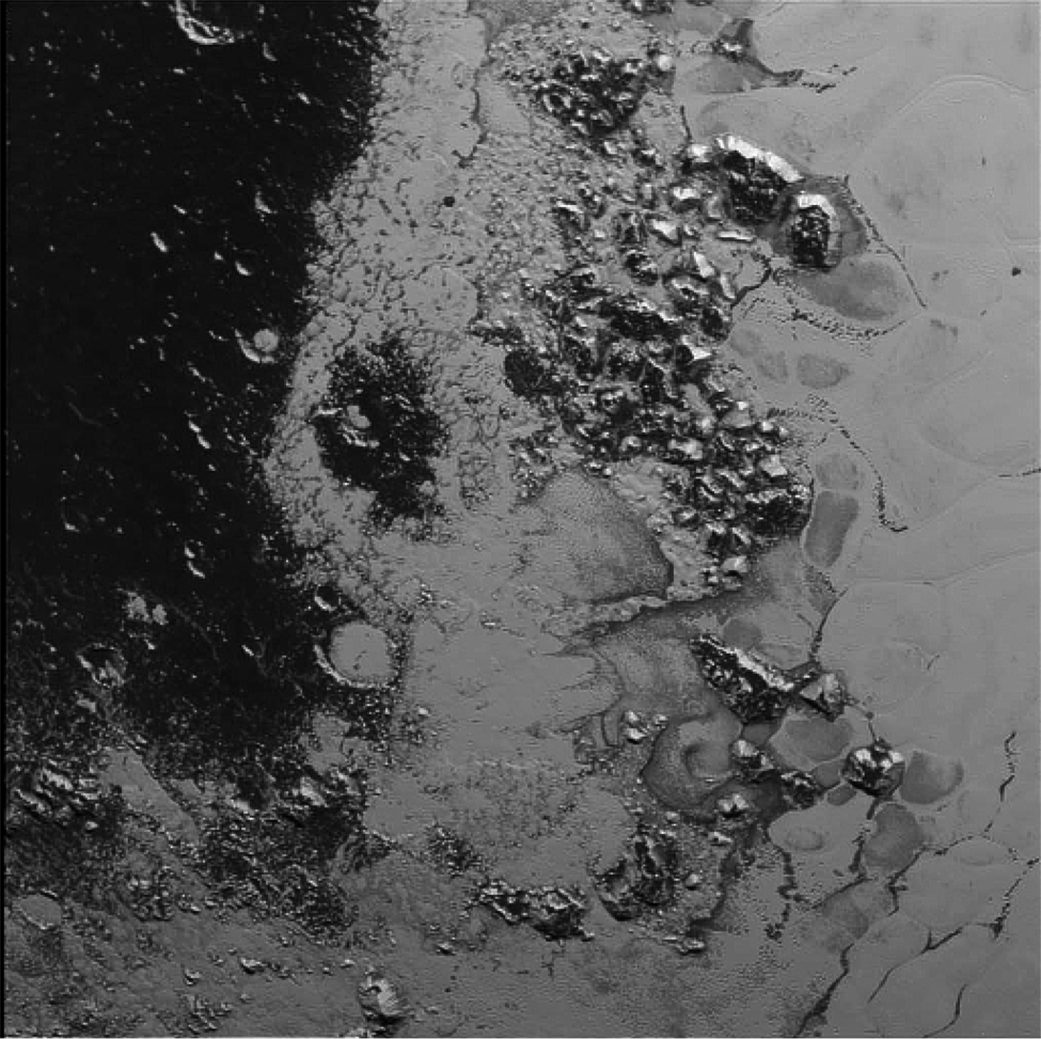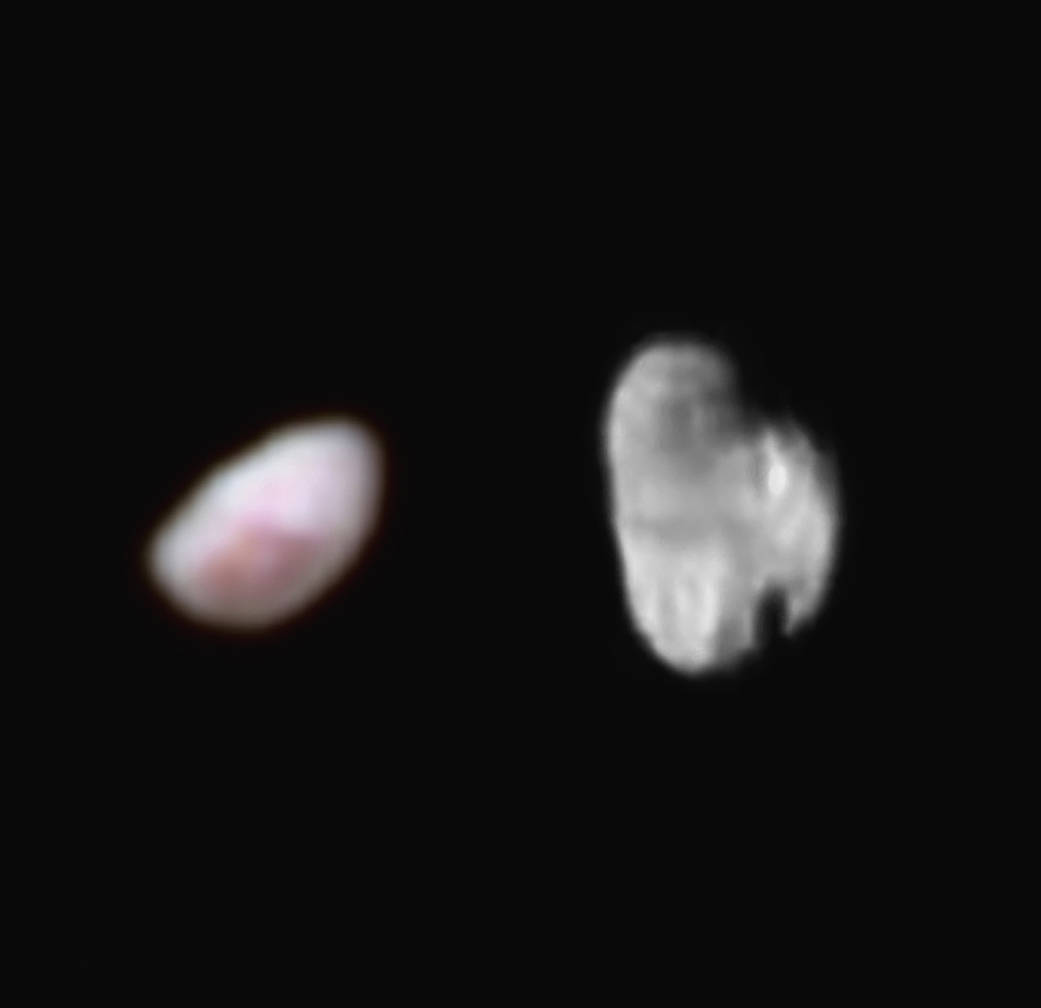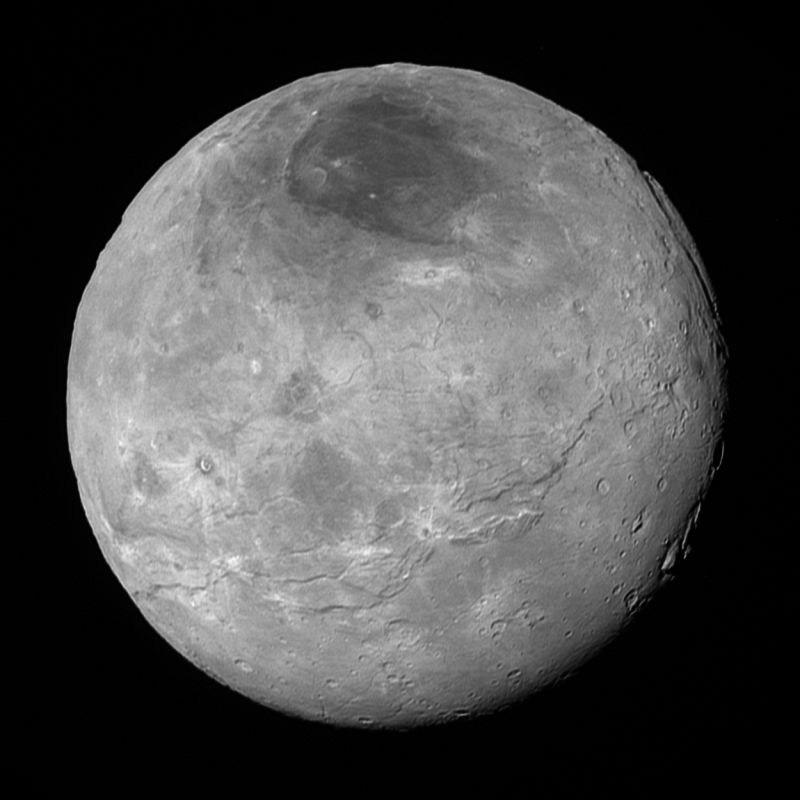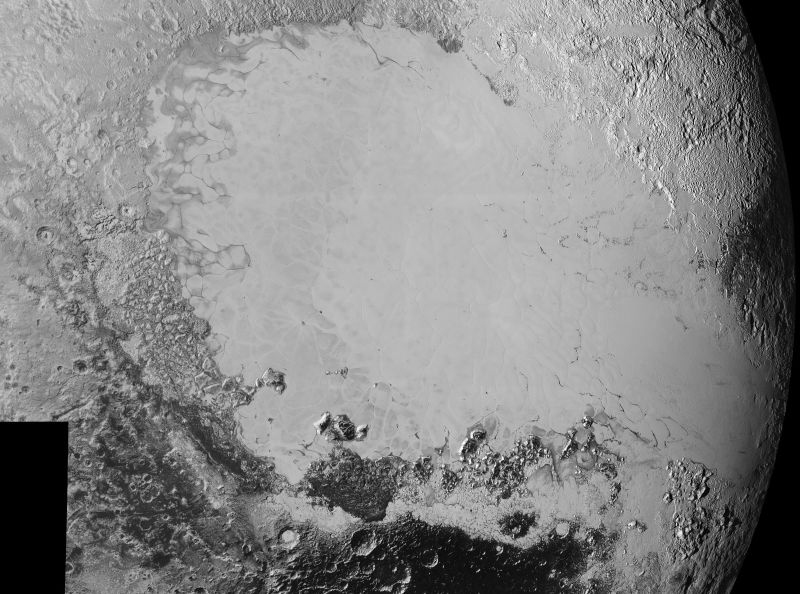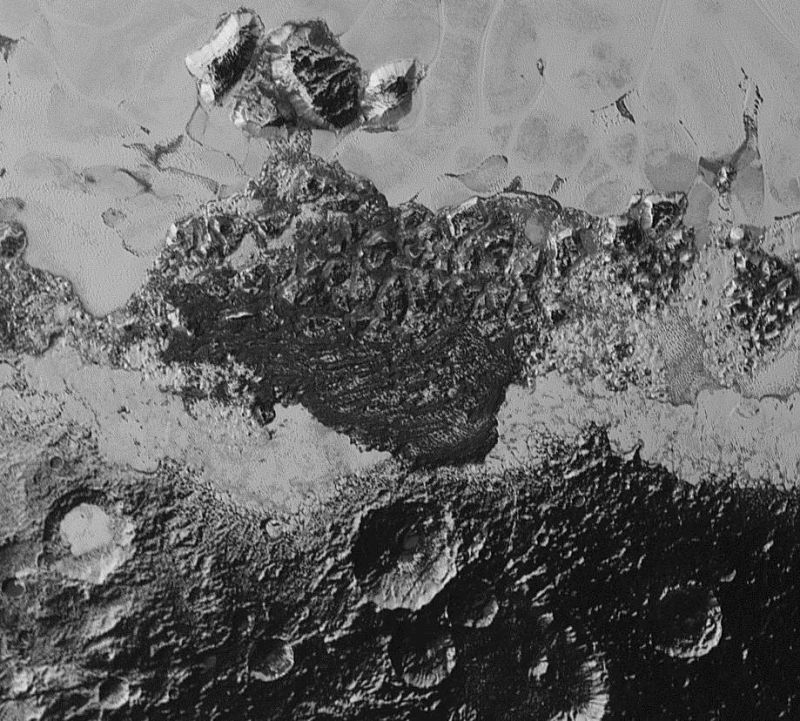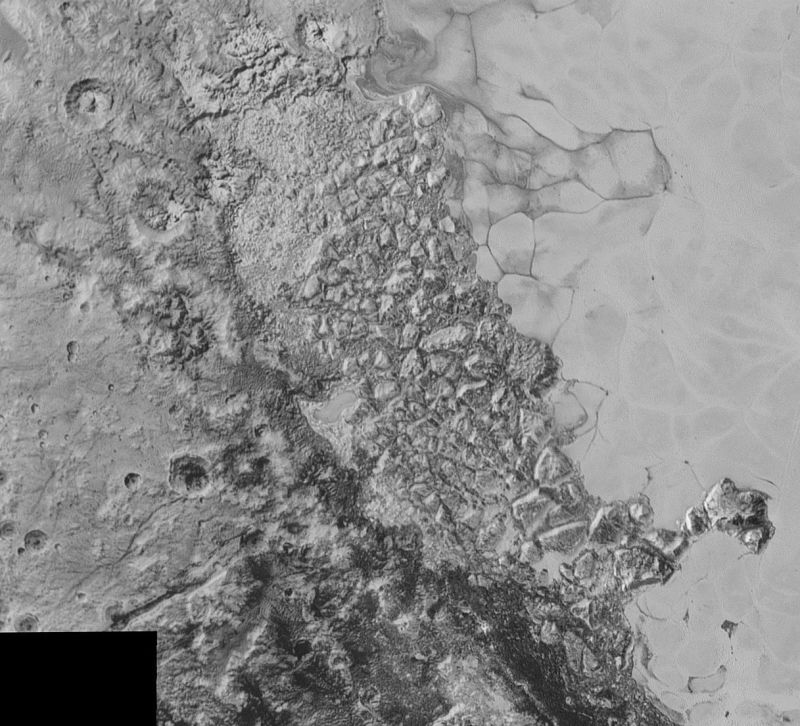Amazing surface features with major mountains. I will be interested to learn the elevations. The surface of Pluto is certainly different than my false preconception of a dark featureless forsaken asteroid.
Major congratulations to all the scientists, engineers and support people who played a role in achieving this great success. And more discoveries to come.
As a believer, I am in awe of the creator's creation and the power he has given man to explore and appreciate it.
A picky side note: I hope they are circumspect in naming the surface features. I've heard some sci-fi names mentioned. These are not necessarily a good choice that will stand the test of time. Case in point: Holmes Peak adjacent to Tulsa. Named for Sherlock Holmes (?) because there was an influential group of Sherlock Holmes fans in Tulsa at one point in time.
Major congratulations to all the scientists, engineers and support people who played a role in achieving this great success. And more discoveries to come.
As a believer, I am in awe of the creator's creation and the power he has given man to explore and appreciate it.
A picky side note: I hope they are circumspect in naming the surface features. I've heard some sci-fi names mentioned. These are not necessarily a good choice that will stand the test of time. Case in point: Holmes Peak adjacent to Tulsa. Named for Sherlock Holmes (?) because there was an influential group of Sherlock Holmes fans in Tulsa at one point in time.










